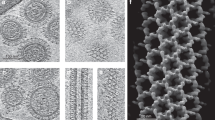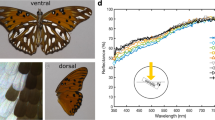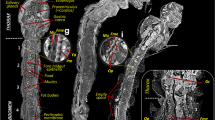Abstract
EXPERIMENTS recorded in a recent paper1 have shown that the hæmocytic reaction of insects to parasites and other foreign bodies in their hæmocœle is stimulated by properties of the surfaces of those objects. In an article2 the publication of which has been delayed, I have brought together observations which suggest that the hæmocytes of an insect react to any surface which lacks specific properties of the surfaces which they themselves lay down, or contribute to, about the organs and tissues of the insect of which they form part.
This is a preview of subscription content, access via your institution
Access options
Subscribe to this journal
Receive 51 print issues and online access
$199.00 per year
only $3.90 per issue
Buy this article
- Purchase on Springer Link
- Instant access to full article PDF
Prices may be subject to local taxes which are calculated during checkout
Similar content being viewed by others
References
Salt, G., Proc. Roy. Soc., B, 151, 446 (1960).
Salt, G., in “The Cell and the Organism” (Camb. Univ. Press, 1961).
Author information
Authors and Affiliations
Rights and permissions
About this article
Cite this article
SALT, G. Surface of a Parasite and the Hæmocytic Reaction of its Host. Nature 188, 162–163 (1960). https://doi.org/10.1038/188162a0
Issue Date:
DOI: https://doi.org/10.1038/188162a0
Comments
By submitting a comment you agree to abide by our Terms and Community Guidelines. If you find something abusive or that does not comply with our terms or guidelines please flag it as inappropriate.



